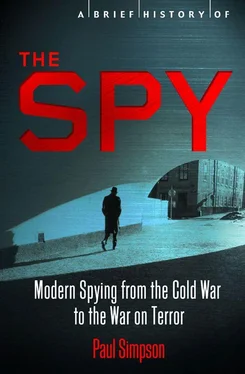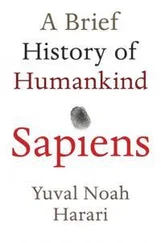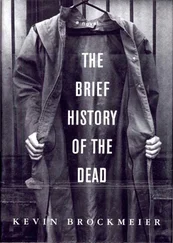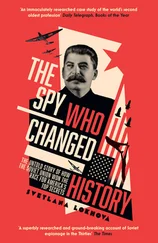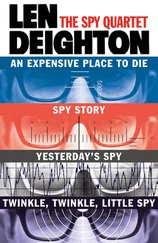Paul Simpson - A Brief History of the Spy
Здесь есть возможность читать онлайн «Paul Simpson - A Brief History of the Spy» весь текст электронной книги совершенно бесплатно (целиком полную версию без сокращений). В некоторых случаях можно слушать аудио, скачать через торрент в формате fb2 и присутствует краткое содержание. Город: London, Год выпуска: 2013, ISBN: 2013, Издательство: Constable & Robinson, Жанр: Прочая документальная литература, на английском языке. Описание произведения, (предисловие) а так же отзывы посетителей доступны на портале библиотеки ЛибКат.
- Название:A Brief History of the Spy
- Автор:
- Издательство:Constable & Robinson
- Жанр:
- Год:2013
- Город:London
- ISBN:9781780338910
- Рейтинг книги:3 / 5. Голосов: 1
-
Избранное:Добавить в избранное
- Отзывы:
-
Ваша оценка:
- 60
- 1
- 2
- 3
- 4
- 5
A Brief History of the Spy: краткое содержание, описание и аннотация
Предлагаем к чтению аннотацию, описание, краткое содержание или предисловие (зависит от того, что написал сам автор книги «A Brief History of the Spy»). Если вы не нашли необходимую информацию о книге — напишите в комментариях, мы постараемся отыскать её.
A Brief History of the Spy — читать онлайн бесплатно полную книгу (весь текст) целиком
Ниже представлен текст книги, разбитый по страницам. Система сохранения места последней прочитанной страницы, позволяет с удобством читать онлайн бесплатно книгу «A Brief History of the Spy», без необходимости каждый раз заново искать на чём Вы остановились. Поставьте закладку, и сможете в любой момент перейти на страницу, на которой закончили чтение.
Интервал:
Закладка:
Paul Simpson
A Brief History of the Spy
In memory of my mother, Mary Howden-Simpson, who introduced me to Simon Templar, James Bond and so many other fictional heroes.
‘The one thing you can bet is that spying is never over. Spying is like the wiring in this building — it’s just a question of who takes it over and switches on the lights.’
John le Carré, 1996AUTHOR’S NOTE
The invading army is coming up on the defenders’ stronghold. It’s heavily fortified — a high wall surrounds the city, which appears, at first glance, to be impregnable. The army commanders know that there is no option: they must take the city, and quickly, or their campaign will lose momentum.
Two spies are ordered to find out the lie of the land. They infiltrate the city, but are nearly captured. One of the locals, a prostitute who has been harbouring them, sends the army off in the wrong direction, while the spies manage to escape back to their own lines. With the information they have retrieved, the commanders make a successful plan of battle — and take the city.
A scene from the Iraq War, or perhaps one of the Balkan conflicts of the late twentieth century? No, this is a reconstruction of events surrounding the capture of the town of Jericho, as described in the Book of Joshua, one of the early books of the Bible, which can be dated to somewhere around the fourteenth century BC. Modern spies might be able to transmit information to their superiors using hi-tech equipment, but the core demands of the espionage world have hardly changed in thousands of years. Men and women (from ancient times, spying has always been an equal opportunity profession) have to put themselves at risk in order to obtain information that other people simply do not want them to have.
There can be few people who haven’t seen a spy film, especially one of the score of movies made featuring Ian Fleming’s fictional secret agent, James Bond. The suave, debonair, tuxedoed Roger Moore incarnation of that character belongs firmly in the realms of fiction, but the more gritty, determined agent, as embodied by Daniel Craig’s twenty-first century version or the screen interpretation of Robert Ludlum’s Jason Bourne, is a far more accurate account of life in a world of treachery and deceit. Many of the spies whose deeds are examined in this volume carried out feats that would be dismissed as pure fiction, were they not fully documented.
This Brief History of the Spy focuses on the period from the Second World War up to the present day, the time of the Cold War and the War on Terror. Even within that comparatively short time, the world in which spies operate has changed almost beyond recognition. The threat from terrorism is today perceived as much stronger than the fear of the Russians or the Chinese — but with events unfolding in the Middle East, will that continue to be the case?
Some of the changes have occurred for pragmatic reasons. ‘The enemy of my enemy is my friend’ is a precept that applies in espionage as much as it does in diplomacy. One jaded CIA officer sarcastically observes in the 007 film Quantum of Solace , ‘You’re right, we should only deal with nice people’, but who are the ‘nice people’? That line resonates when considering the debate over the use of ‘extended interrogation techniques’ (what most would regard as torture) by the CIA in the War on Terror.
One of the most fascinating things about researching and writing this overview has been the discovery of so many cases that never really entered the public consciousness. I’ve been intrigued by spies since reading my first Bond novel and being given The Master Book of Spies with its pictures of secret cameras and other cool equipment as a youngster. My first book was a history of James Bond, so I feel in a way I’ve come full circle, chronicling the exploits of those who labour on the real battlefields, facing imprisonment, torture or worse. To those unsung heroes this book is also gratefully dedicated.
A note on spellings: names translated from Cyrillic or Arabic languages into English can appear in many different forms. The most common (particularly Osama bin Laden, and al-Qaeda) are adopted here, but where original documents are quoted, the spellings and abbreviations within are retained (notably UBL for Usama Bin Ladin). Original newspaper and magazine articles have been referenced where possible, along with declassified documents released by the FBI and the CIA. A select bibliography is provided at the end of the book.
Paul Simpson
January 2013
PREFACE
Surprising as it may be to those of us brought up on a diet of spy books and films, at the end of the Second World War most of the government agencies whose acronyms and names have become so familiar did not exist as we know them today. There was no CIA. The letters KGB didn’t instil the terror that they would from the fifties onwards. There was no state of Israel, so its intelligence organizations Mossad and Shin Bet didn’t exist either. The South African espionage group nicknamed BOSS wasn’t around. Pre-Communist Germany had no Stasi.
The geopolitical shifts at the end of the war, set down in agreements between the leaders of America, Great Britain and the Soviet Union at Yalta and Potsdam in 1945, meant that the intelligence communities were dealing with a very different landscape to the one between the World Wars and during the conflict itself.
Displaying the paranoia for which he is justly remembered, Soviet leader Josef Stalin was already spying on his allies — his muted reaction to US President Harry S. Truman’s hints about the atomic bomb indicated to many that he was already well aware of the American progress, and, indeed, may even have known more than his counterpart. Soviet agents were already part of the British intelligence service hierarchy, and in place in strategic locations around the globe.
Truman came to realize that the Soviets were not to be trusted, and under his presidency the American intelligence community was reorganized to deal with the threat as the Cold War grew ever chillier. The British Secret Intelligence Service (popularly known as MI6, a designation used in this book for avoidance of ambiguity) also focused its attention on Russia and its satellites. The Cold War heated up and cooled down through successive regimes, with proxy wars fought around the world.
Of course, the threat from the Soviet Union wasn’t the only danger that the various spy agencies in the Western world had to deal with — nor were the capitalists of America and Britain Russia’s only enemies. Many countries faced domestic foes: the British in Ireland; the South Africans against those who opposed apartheid. The creation of the state of Israel added to the volatility of the Middle East, with the Israelis, unsurprisingly, expecting attack from those who vehemently objected to the Jews returning to their ancestral home: Mossad gained a reputation for ferocity and determination that continue to make it feared.
But when glasnost came, the Berlin Wall fell, and the Communist experiment proved to be a failure, those in the intelligence world slowly began to realize that there were new global threats. The World Trade Center bombings in 1993, and then, most dramatically, the events of 11 September 2001 (forever after simply known as 9/11) meant that the enemy wasn’t as easy to identify, although, as the expulsion of Russian agent Anna Chapman and the other spies working for the KGB’s successor, the SVR, in 2010 proves, some old enemies may not be dead, simply dormant…
1
EVERYTHING CHANGES
The end of the Second World War marked a sea change for the world’s intelligence agencies. In some countries, such as the United States, it would lead to a major reorganization of the way in which they worked; in others, including the Soviet Union, it would mean that some operations, which had perhaps been of lesser significance during the war against Hitler, took higher priority, as former wartime allies became enemies.
Читать дальшеИнтервал:
Закладка:
Похожие книги на «A Brief History of the Spy»
Представляем Вашему вниманию похожие книги на «A Brief History of the Spy» списком для выбора. Мы отобрали схожую по названию и смыслу литературу в надежде предоставить читателям больше вариантов отыскать новые, интересные, ещё непрочитанные произведения.
Обсуждение, отзывы о книге «A Brief History of the Spy» и просто собственные мнения читателей. Оставьте ваши комментарии, напишите, что Вы думаете о произведении, его смысле или главных героях. Укажите что конкретно понравилось, а что нет, и почему Вы так считаете.
